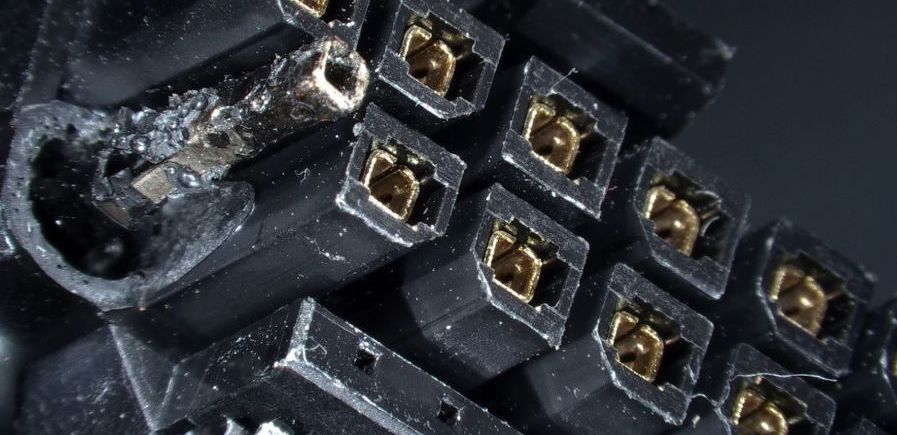These last days, several owners of RTX 50 (especially owners of RTX 5090 but also few RTX 5080) have had some serious issues with the 12VHPWR power connector. Under heavy graphics load, the connector on the GPU side can overheat and even melt.
Owners of RTX 4090 had the same problem and now, the same story repeats itself with RTX 5090 and RTX 5080. Amnesia, amnesia…
A power hungry graphics card like the RTX 5090 can draw up to 575W and even 600W when an app like FurMark is running (with spikes up to 644W, see here). The 12VHPWR connector has 12 pins for power (high current intensity) and 4 pins for data (low current intensity, it’s just a signal). The 12VHPWR connector is designed to delivery up to 660W but is rated for 600W. 660W means an intensity of 55A (660W/12V) distributed on 6 pins which leads to 55/6 = 9.1A per pin. A 12VHPWR cable is made up of 16AWG (AWG = American Wire Gauge) wires (1.3mm2 in copper with a resistance of 13.18 ohms/km, useful in P=RI2 to get the power dissipated by wires and voltage drop…) that can carry up to 13A.

(source)
Traditional 8-pin connectors used in Radeon cards for example, are rated for 150W but can support up to 290W. The safety margin is very large (1.9). That is not the case with 12VHPWR connectors: the safety margin is small (1.1).
The problem encountered by some RTX 5090 owners is essentially a problem of correct electrical contact with as consequence, a non-uniform distribution of the current intensity in the wires of the 12VHPWR cable. Under heavy graphics load, the 12VHPWR works at its limits and if the contact surface between the 12VHPWR pins and GPU side pins is not perfect, the electrical current (up to 8A or 9A) passes through few contact points only, and can lead to an overheating and even a melting of the connector.
ASUS has a nice feature for RTX ASTRAL in its GPU Tweak 3 utility: the Power Monitor that, wow incredible (this issue was already known?), shows the distribution of current intensity in the 12VHPWR connector:
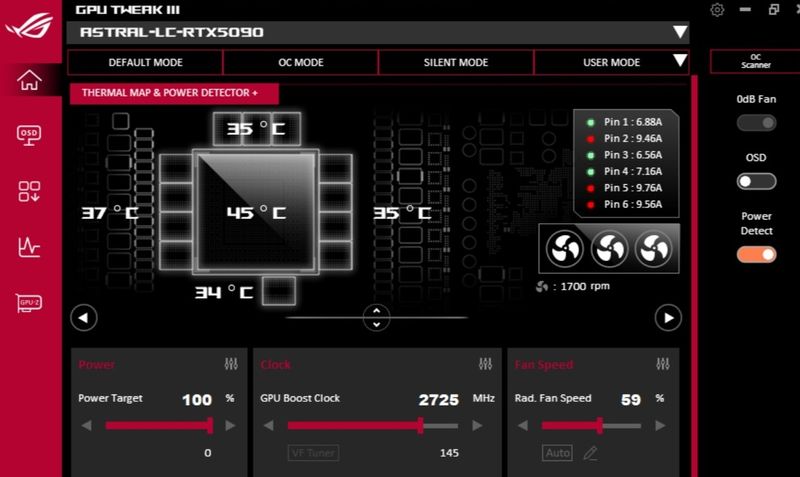
(source)
The 12VHPWR connector (ATX 3.0) is the old name and is now (in 2025) replaced by the 12V-2×6 connector (ATX 3.1 norm, used by the RTX 50 graphics cards). This new connector is supposed to be more reliable with longer power pins in the GPU side connector (+0.25mm longer than 12VHPWR) and shorter data pins.
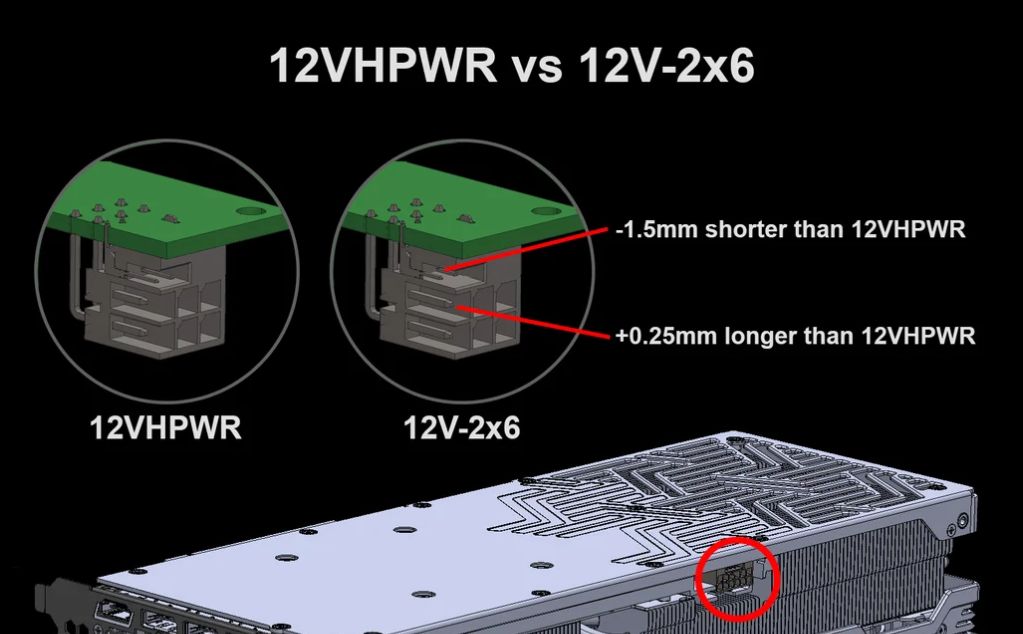
(source)
Maybe the solution is to use again old but safe 8-pin connectors and put four 8-pin connectors on the RTX 5090 PCB. As I said few lines above, each 8-pin connector is rated for 150W, so with four connectors, a power draw of 600W is easily supported. NV, it’s time to stop this insanity!
Four connectors should not be a problem when you see the size of the VGA cooler, several recent high-end graphics cards have already three 8-pins like this ASUS TUF RX 7900 XT:
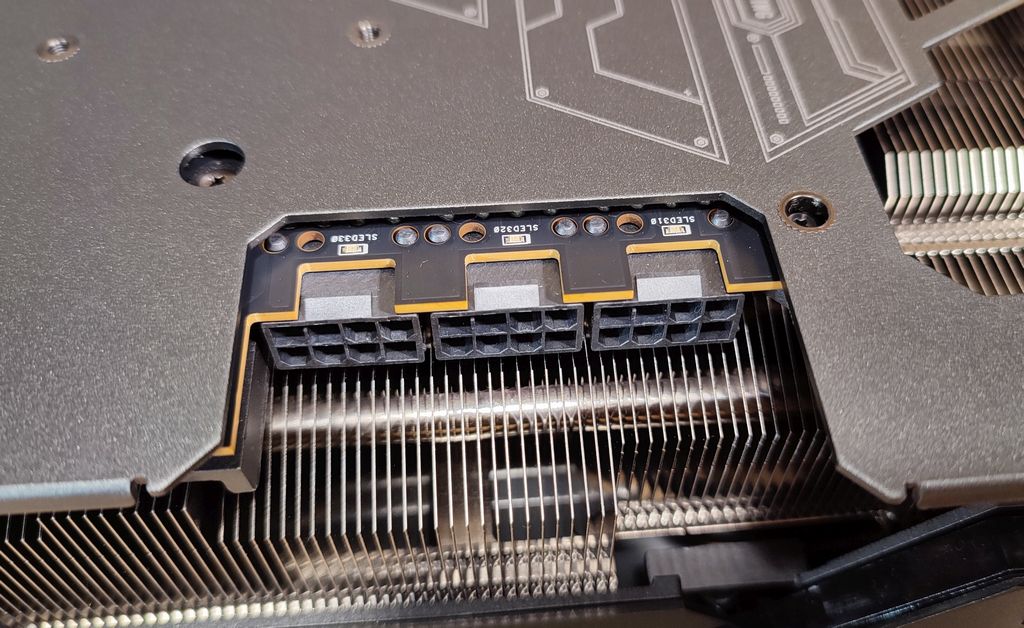
In many articles and videos that try to analyze and understand the issues about 12V-2×6 connectors, FurMark is used to quickly stress the RTX 5090 (I still not have access to a RTX 50 that’s why you see wrong temperature on FurMark 2 screenshots).
12VHPWR on RTX 5090 is Extremely Concerning
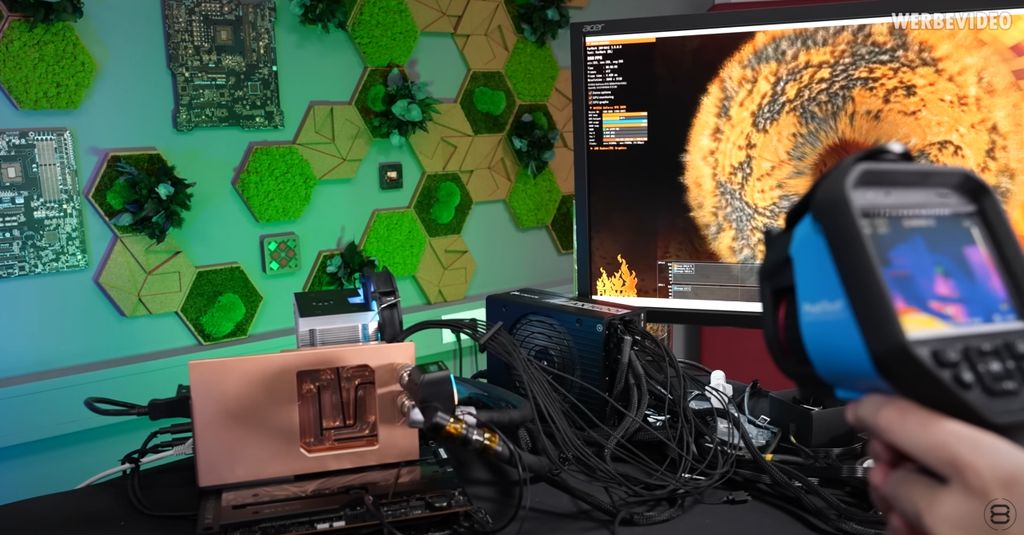
In this article, Igor Wallossek explains the problem with contact points that can lead to uneven power distribution in the 12VHPWR connector.
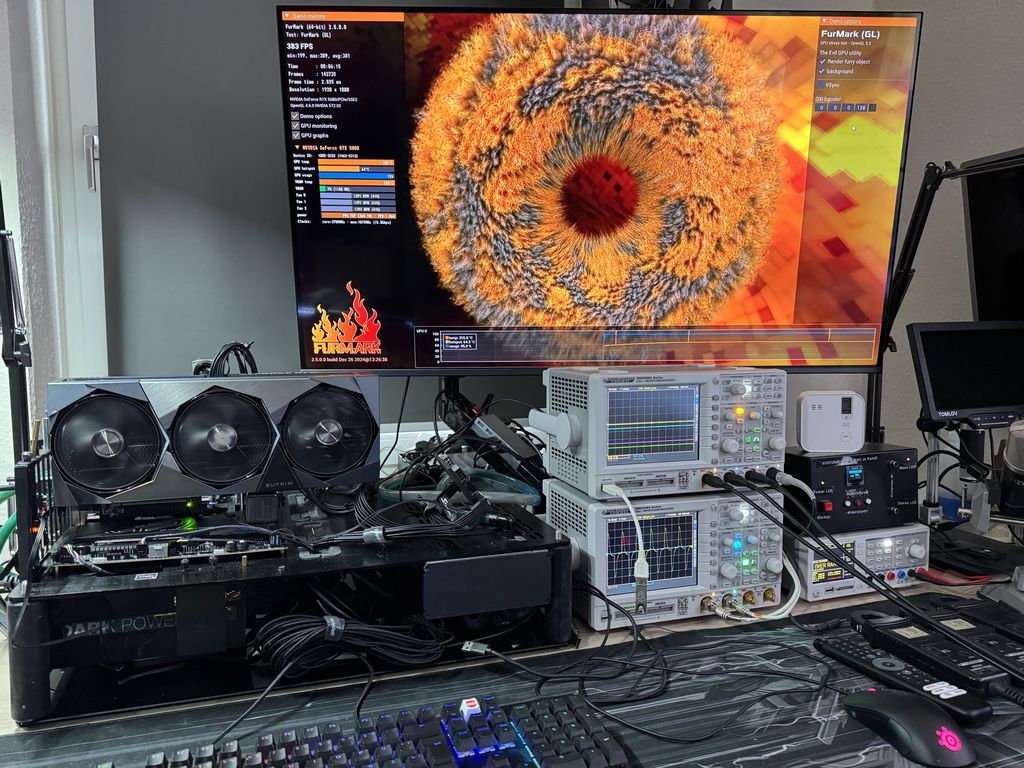
Hardware Busters shows how to correctly measure the distribution of power in the 12VHPWR connector of a RTX 5080.
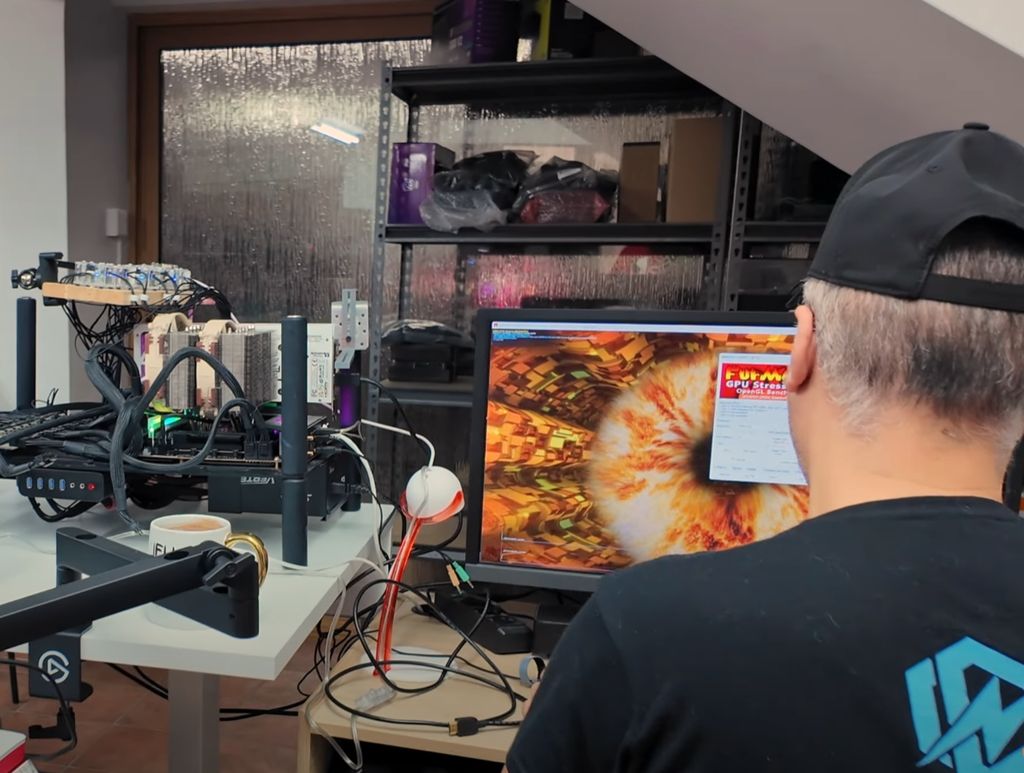
The PMD2 saved the RTX 5090…
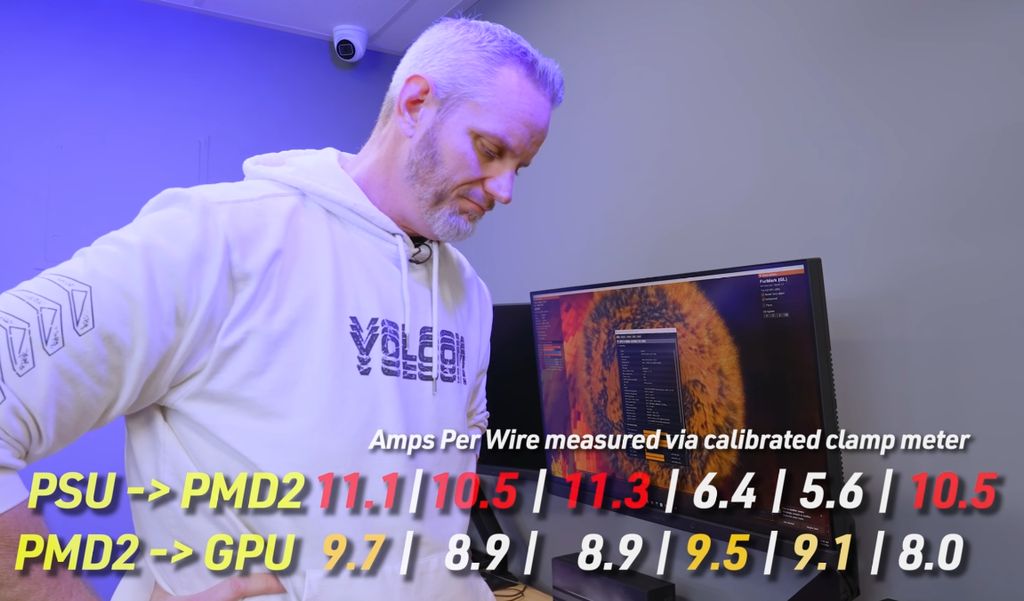
The following post by an electrical engineer details the 12VHPWR connector and explains that 12VHPWR connectors are used at their limits and that’s bad:
…
The 8-pin standard asks for 150W at 12V, so 12.5A. Rounding up a bit you might say that it needs 4.5A per pin. With 9-amp connectors, each one is only at half capacity. In a 600W 12VHPWR connector, each pin is being asked for 8.33A already. If you have 8.5A pins, there is functionally no headroom here, and if you have 9A pins, yeah that’s not great either. Those 8.5A pins will fail under real-world conditions such as higher ambient temperatures, imperfect surface cleaning, and transient spikes from GPUs. The 9A pins are not much better.
I firmly believe that this is where the problem lies. These pins are at the limit, and the margin of error of as little as 1 sixth of an amp before you max out a pin is far too small for consumer hardware. Safety factor here is abysmal. 9Ax12Vx6pins = 648W, and if using 8.5A pins, 612W. The connector itself is good supposedly for up to 660W, so assuming they are allowing a slight overage on each pin, or have slightly better pins than I can find in 5 minutes on the Molex website, you still only have a safety factor of 1.1x.
…
It is my opinion that any card drawing more than the base 375W per 12VHPWR connector should be avoided. Every single-cable 4090 and 5090 is in that mix, and the 5080 is borderline at 360W.
Another interesting video that explains some concepts of recent graphics cards power circuitry…
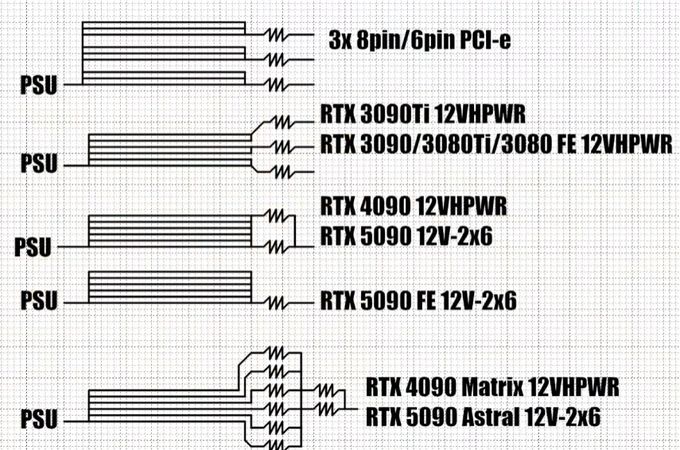
Here are the 6 shunt resistors (that allow power monitoring) right after the 12V-2×6 connectors:

